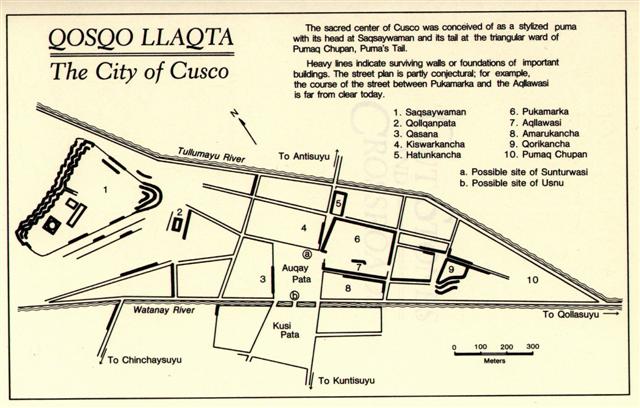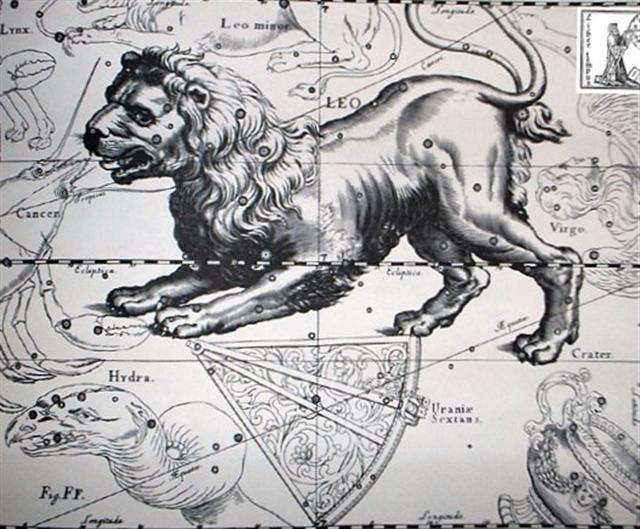When Nonoma (alias Jupiter, Father Light, Jus Piter) was out in the night urinating (mimi, mictating, making water) this surely was a Sign given for us. Obviously we should understand this to be a reference to Leo urinating, for the Babylonians had placed Jupiter at the head of the Lion:
In South America they depicted the urine from the Lion (the Puma) running down from Coxa (θ Leonis, Hips), which at the time of rongorongo was rising heliacally in right ascension day *169. I.e., in September 6 (249).
In the year when our Gregorian calendar was born, though, Coxa had been in ºSeptember 2 (245), which might indicate the creators of Manuscript E had used this date for when the double-canoe was launched on its journey to Easter Island:
Anyhow, Nonoma was out fertilizing Mother Earth in night number 288 and to convert this to daytime we ought to reduce with 183 (= 366 / 2), which leads us to day 105 (April 15). And by adopting the positions of the stars in the year 1582 AD we will find ºApril 15 at Alrisha (the Knot, α Piscium).
Suitably the Great Fish who swallowed Jonah was stopped in his track at this place, for in the following day came Hamal (the Leader of the Flock of 10). ... Strassmeier and Epping, in their Astronomishes aus Babylon, say that there its stars formed the third of the twenty-eight ecliptic constellations, - Arku-sha-rishu-ku, literally the Back of the Head of Ku, - which had been established along that great circle milleniums before our era; and Lenormant quotes, as an individual title from cuneiform inscriptions, Dil-kar, the Proclaimer of Dawn, that Jensen reads As-kar, and others Dil-gan, the Messenger of Light. George Smith inferred from the tablets that it might be the Star of the Flocks; while other Euphratean names have been Lu-lim, or Lu-nit, the Ram's Eye; and Si-mal or Si-mul, the Horn star, which came down even to late astrology as the Ram's Horn. It also was Anuv, and had its constellation's titles I-ku and I-ku-u, - by abbreviation Ku, - the Prince, or the Leading One, the Ram that led the heavenly flock, some of íts titles at a different date being applied to Capella of Auriga. Brown associates it with Aloros, the first of the ten mythical kings of Akkad anterior to the Deluge, the duration of whose reigns proportionately coincided with the distances apart of the ten chief ecliptic stars beginning with Hamal, and he deduces from this kingly title the Assyrian Ailuv, and hence the Hebrew Ayil; the other stars corresponding to the other mythical kings being Alcyone, Aldebaran, Pollux, Regulus, Spica, Antares, Algenib, Deneb Algedi, and Scheat ...
... Heracles is swallowed by Tiamat, and disappears for three days before fighting his way out. So also, according to a Hebrew moral tale apparently based on the same icon, Jonah spent three days in the Whale's belly; and so Marduk's representative, the king of Babylon, spent a period in demise every year, during which he was supposedly fighting Tiamat ... Marduk's or Perseus's white solar horse here becomes the reward for Hesione's rescue. Heracles's loss of hair emphasizes his solar character: a shearing of the sacred king's locks when the year came to an end, typified the reduction of his magical strength, as in the story of Samson ... When he reappeared, he had no more hair than an infant ...
... Then the big Fish did swallow him, and he
had done acts worthy of blame.
But We cast him forth on the naked shore in a
state of sickness,
|
|||||||||||||||||||||||||||||||||||||||||||||||||||||||||||||










